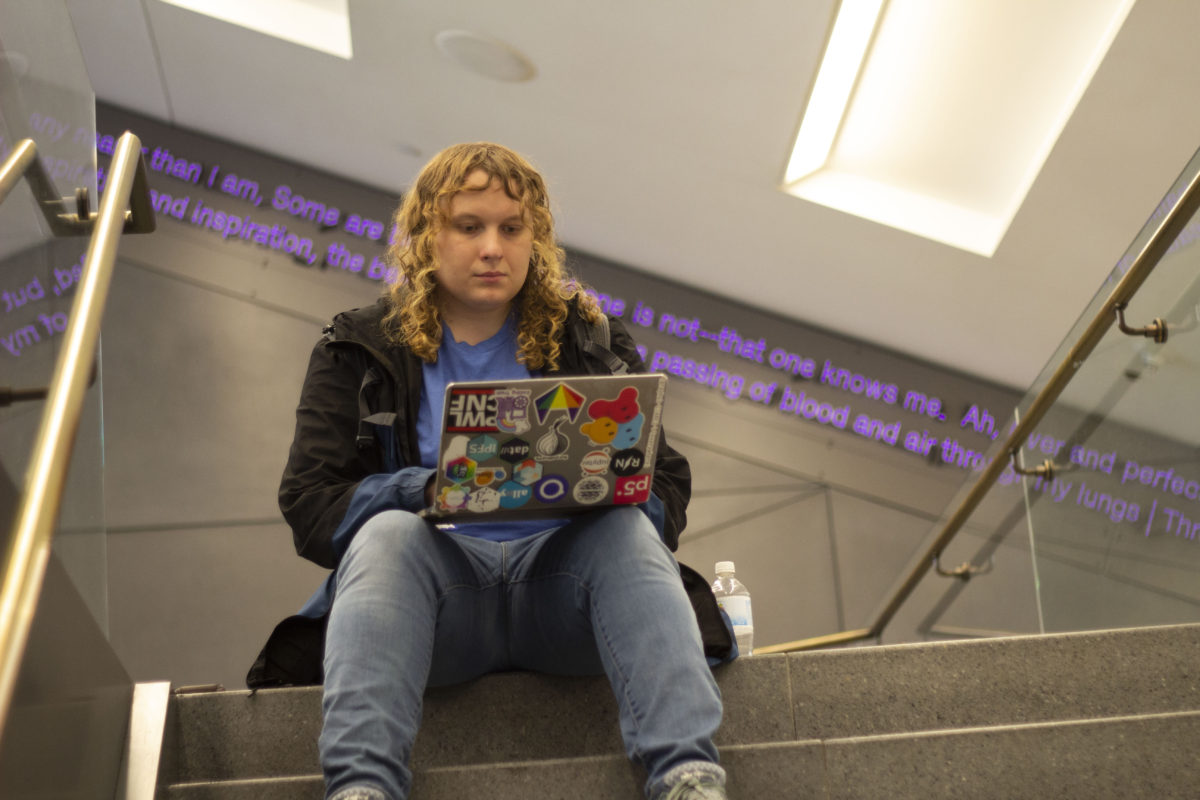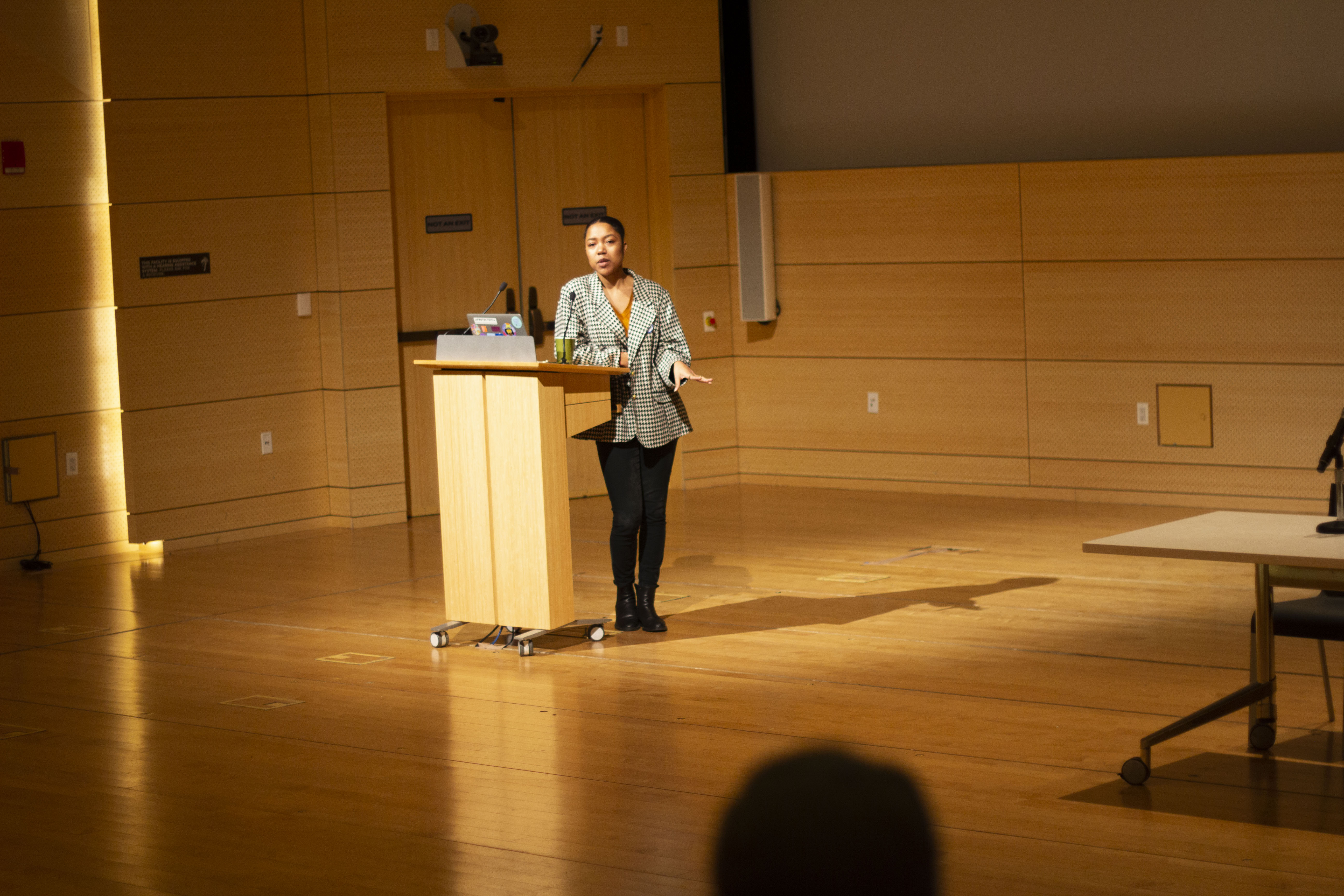A previous version of this story misstated Leticia Cartier Oxley’s role at Genspace. She is a Program Associate, not Program Director. Also, Suzanne Lee’s ‘kombucha leather’ was produced in her own studio, not at Genspace.
Iz Goitia spun the mouse in a circular motion and an animated platypus formed on the desktop screen in front of her, a product of the “Making Adventure Games with Javascript and the Wick Editor” workshop. One story above, in the Tishman Auditorium, New York University and Pratt Institute telecommunications professor Ari Melenciano spoke emphatically during her panel “Radical Technoculture for Racial Equity.”
“Tech is a very powerful tool that can empower and disempower people,” said Melenciano.
Processing Community Day NYC, the coding event co-hosted by The New School and the New York City Department of Education Computer Science For All initiative on Feb. 8, interlinked these two differing worlds with the common mission of equitable coding theory and development. The day attracted a steady stream of 207 code and processing learners, willing to spend a clear-skied Saturday indoors and without a window view, according to Processing Community Day organizer Lee Tusman.
According to their website, Processing Community Day is about “building community, sharing knowledge, [and] learning through making,” with a goal of making code more accessible to all communities, and to “celebrate art, code, and diversity.”

While this was only Processing Community Day’s second year, both new and experienced coders showed up prepared to focus on how to make coding more accessible to the world at large. With 17 talks and panels scheduled, the day wasn’t solely about learning coding practices or the minutiae of various coding techniques. With their collective insights, attendees and speakers alike focused on understanding code beyond its structure.
They discussed the necessity of broader representation and accountability of those in the coding industry and in code itself. In the morning, panels like Winnie Yoe’s, titled “Narratives of Resistance & Resilience: Documenting & Making Sense of the Anti-ELAB protests in Hong Kong”, and Professor Melenciano’s previously mentioned panel discussed how code can be a tool for social justice. The panels explored accountability and collectivity: from an analysis of post-protest Hong Kong police statements, to the potential of peer to peer companies like Uber and Postmates unionizing.
The afternoon continued with panels entitled “The Math, Philosophy and Programming of Chaos Theory,” and “Working with Living Things: Intro to Biodesign,” led by Alexander Miller and Leticia Cartier Oxley, respectively. A Program Associate of Genspace, a “community biology lab” based out of Brooklyn, Oxley encourages non-scientists to participate in scientific projects.
One example that Oxley gave of different fields working together to create something new was kombucha leather. The product, which uses the ingredients found in kombucha to make leather, was invented by Suzanne Lee, a British fashion designer, in her own studio. Genspace, according to Oxley, exists to bring in people whose passions lie outside the world of science. One of these people is Heather Dewey-Hagborg, an artist and educator who utilized Genspace’s resources to create her project ‘Stranger Visions’; a project in which Dewey-Hagborg utilized DNA collected from discarded items like cigarette butts to create representations of what the people that the DNA belonged to might have looked like. This project, which at one point hung in the Museum of Modern Art, was used to call attention to the culture of “biological surveillance,” emerging with the more and more widespread use of forensic evidence. With several slides, Oxley demonstrated further the possibilities of the theoretical aspects of science working together with the creative and tangible aspects of art.

In his panel on chaos theory—a concept based on the idea that everything is connected and intertwined, even things that may appear random—programmer Alexander Miller demonstrated the difference between chaotic patterns and ‘randomness’. Miller explained that chaos is unpredictable, but deterministic—or based off of an original starting point—while randomness is not. Code, Miller pointed out, allows one to look more closely at these patterns and discern starting points that might otherwise be hidden.
Across topics, the focus on human-centered design was present among all panel speakers. “I don’t want to be this entirely predictable machine,” said Miller, looking out at the audience. “I want to be a human.”







